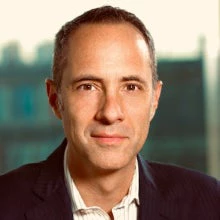
Confucius and JFK have one thing in common: They both produced pithy quotes about the importance of recognizing ignorance as the first step in gaining wisdom. Let’s trust their insight for a moment and presuppose that there are more things about economic development that we don’t know than we do know.
It seems that, after 50 years of the development business, economists are starting to realize the significance of this ignorance. We still build models that estimate the probability of particular outcomes and simulate entire economies to find out how a policy change or investment might wind its way through a complex market. However, with increasing frequency, we are using approaches to knowledge gathering and sharing that “crowd in” information from untapped sources—consumers, tax payers, investors, academics, practitioners or policy makers, the poor, youth, women—any population group that might represent an important perspective on development or hold the key to an elusive problem.
Technology is allowing us increasing access to these groups. Financial markets have long demonstrated that large groups of unrelated people generally know more than a handful of experts. It is a truism of investment firms that, over the long term, it is nearly impossible for brokers and individual investors to beat the stock market.
The economist James Suriowecki explains that information markets—like the stock market—work by accumulating our knowledge while letting our errors cancel each other out. (Bubbles are the exception. These are caused by waves of erroneous information that surge through a market like an infectious disease.)
Relatedly, professors of behavioral economics or heuristics, like Scott Page at University of Michigan, emphasize the importance of diversity in perception and experience to problem solving. Crowd sourcing is one approach to gathering far-flung ideas, and that is where information markets can be helpful. Intrade.com—the on-line gambling site that functions like a prediction market by selling futures on political, economic and sporting events—started shorting Herman Cain as the Republican Presidential nominee weeks before his last round of scandals.
In fact, a $10.00 “buy” contract on Cain never cost more than about $1.60, meaning “the crowd” of people who are willing to wager their own money never gave him more than a 16 percent likelihood of getting the nomination. One challenge of crowd-sourcing information from large segments of society is the difficulty it presents in defining the demographic nature of the participants.
In a closed system, like a large corporation, intelligent crowd sourcing is possible through internet-mounted platforms that monitor the predictive capability of different groups of players.
A CEO can use the platform to see, for example, which group—the company’s research scientists, sales staff, or middle managers--is best able to predict the popularity of a new product. For a question of importance to societal well-being, this is harder to do. Answers to complex queries like, “How do changing food prices really affect the poor?” may require feedback from a dispersed community or representative sample of a large population, and analyzing the results requires knowledge of the demographic conditions of the respondents--education, location, gender, income, access to services.
Enter L2L.
A recent innovation from the World Bank’s LAC region provides instantaneous surveying to holders of mobile phones. L2L (from “Listening to LAC”) will allow us to obtain continuous information on the impacts of shocks on a statistically representative sample of households.
The availability of close-to-real-time data helps policymakers, the Bank, and other donors to detect warning signs so they can prepare for and respond to crises more effectively.
By deploying surveys via mobile phone, L2L avoids data-entry delays and inaccuracies. In the pilots being run now, the survey questions (10 per round) fall into one of six themes associated with vulnerability and coping strategies: employment, violence, weather shocks, hunger, illness, and access to social services.
The idea is for the data to be available to the public on an open access data platform, once household identifiers are removed. Gallup is helping to pilot the technology in Peru and Honduras. Bank economists and urban planners are taking a two-pronged approach to derive a strategy for the economically optimal use of its “reverted” lands (i.e., former U.S. military bases) alongside the Panama Canal. First, we are building models that estimate the varying growth and employment dividends derived from investments in different sectors—logistics centers, ports, industrial property, ship provisioning, fuel storage, vessel repair and even eco-tourism.
But rather than rely solely on models and market forecasts, we are simultaneously tapping the knowledge of the domestic private sector, international investors, and local and federal government officials by surveying and aggregating their views of the most viable use of the land, parcel by parcel.
Like the L2L surveying, the starting principle of the Panama surveying is that we don’t have all of the answers. That recognition alone may be the first step to enlightenment.


Join the Conversation